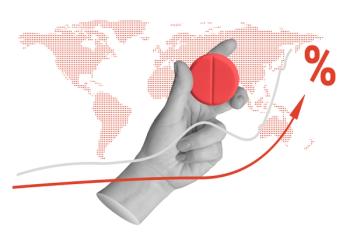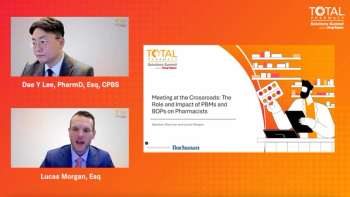
This tool helps combat drug diversion in the ED
HealthMatics ED system is a software application that automates an emergency department, from patient tracking to clinical documentation.
Since February 2003, the Columbia ED has been using technology that helps them watch for doctor shoppers and others who would divert drugs outside the system. The tool, a HealthMatics ED (HMED) system from Allscripts, is a software application that automates an ED, from patient tracking to clinical documentation.
HMED provides a patient summary of past ED visits for the physician or physician assistant to review, Kis selbrack explained. If that patient has a history of presenting with complaints typical of drug abusers, it's a red flag for the physician, who can then proceed as clinically appropriate.
Another tool for ED drug diversion is the venerable prescription pad-sometimes altered, forged, or stolen-a particular problem because of the work flow and chaos of an ED, said Chapin. "Things happen that you have to respond to very quickly, and all of a sudden your prescription pad is on the desk and you're in with a critical patient," he said. "It's a fairly public area, so it's not that difficult for several prescriptions or a prescription pad to go wandering."
Altering an Rx by adding zeros has been a common way for people to obtain more drugs than intended. "It's more difficult if you write out twenty in addition to 20 Percocet, for example," Chapin said. "But a lot of ED physicians, in a hurry, will just write dispense and then the number 20." From that it's relatively easy for the patient to turn the 20 into 200.
Even with the current New York State requirement that each prescriber have his own preprinted Rx pads, trying to track boxes of pads for all the different providers could be a nightmare. But at Columbia all those pads are locked away, to be used only if the computer system is down.
Using HMED, each prescriber prints out his own Rxs on special copy-proof paper obtained from the state. "That has minimized the patient's ability to alter or replicate the prescriptions out in the community," Kisselbrack said. "All our community pharmacists are familiar with what our prescriptions should look like. They're legible. Each physician's DEA is clearly printed, and the physician or physician assistant has to sign off on them before they leave, so it has helped us tremendously in not having to track Rx pads that used to disappear-and then we'd have all these bizarre prescriptions popping up."
Although the prescription paper is kept in a contained area and difficult to access, it could be taken, but with much less likelihood of diversion success, Chapin said. "It would be almost like trying to forge a dollar bill."
In addition, Fields said, diversion by hospital personnel is unlikely with technology because every step is audited. "In the manual world, as a nurse, I had general access to medications; so if I did have a problem with drugs, I could just go get them and sign them off to a patient. But in the electronic world ... we can produce an audit trail going back as far as when the system was first turned on, to see if there is any pattern.
"For example, I can think, 'Gee, how come Nurse Jones' patients always require 50 mg of morphine before their pain goes away, and everybody else's only require two?' I can get into the details, because maybe Nurse Jones legitimately takes care of the sickest, most-in-pain patients. But I can then compare those patients electronically and say, 'No, something's really wrong here.' Then I follow the audit trail."
THE AUTHOR is a writer based in New Hampshire.
Newsletter
Pharmacy practice is always changing. Stay ahead of the curve with the Drug Topics newsletter and get the latest drug information, industry trends, and patient care tips.










































































































































































































